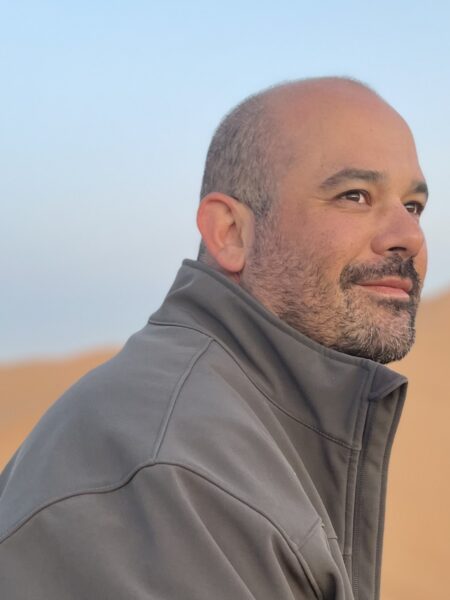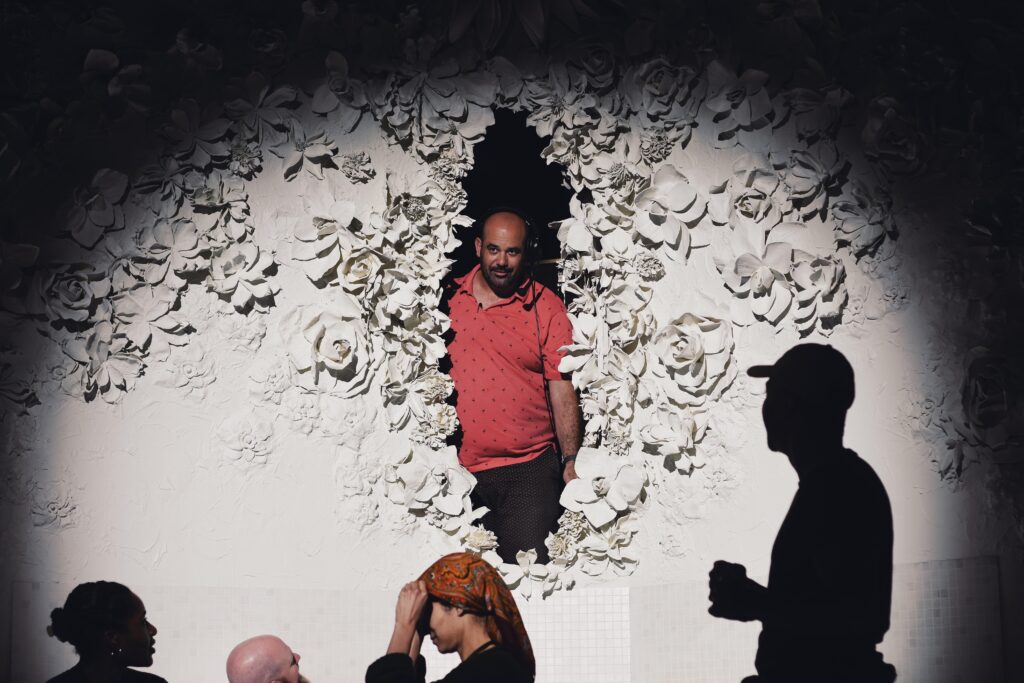
Assistant Professor of Theatre Practice in Production Management and Producing Tony Shayne. Photo courtesy of Tony Shayne.
It’s not a coincidence that Tony Shayne, Assistant Professor of Theatre Practice in Production Management and Producing at the USC School of Dramatic Arts (SDA), makes his home in an adapted historic building in a global metropolis like Los Angeles. As an ardent historic conservation enthusiast, Shayne finds no contradiction in mixing the very old and the very new—both are key ingredients in all that he does.
While his theatrical work has been featured in site-specific, avant-garde productions for organizations like The Industry, LA Opera and LA Fashion Week, there is a love and respect for the classics that lies at the core of his artistic and teaching philosophy.
“The preservation of ideas and the preservation of art are really important to me. I love seeing how that translates into education,” Shayne said. “Take for instance the Roman arch or Roman concrete: these ideas are thousands of years old and remain relevant today. We haven’t necessarily found better building blocks, but have found new ways to utilize them for great innovation.”
Professor Shayne first came to the University of Southern California as a would-be architect-turned BFA lighting design student. Since graduating from USC, Shayne has become known for his artistry in lighting design for dance, his passion as an educator and as a freelance producer, having worked nationally and internationally in dance, theatre, music, opera, film and television. Now a faculty member at SDA, Shayne works primarily with third and fourth-year production and design students, helping them transition from learners of their chosen craft to full-fledged professional makers. He encourages them to build upon the timelessness of the classics, bridging the works and tropes that show up again and again in art with the new projects and works that excite his students.
“[The old] things still ring true—whether you’re doing a daytime drama, the biggest Marvel movie in the world, or you’re trying to build a ride at a theme park,” he explained. “Worldbuilding is craftsmanship, and it still draws upon those old forms of storytelling technique.”
Be a trailblazer
While already being a Trojan influenced Professor Shayne’s decision to return to USC to teach, he was also attracted to the mix of hands-on experience and theory taught at SDA.
“Here at USC, there’s a great balance of in-classroom and practicum work,” Shayne said. He believes the strength of the School is that students aren’t just learning the theory of design—they’re getting to do the design and find out if the theory holds.
As someone who always learned better by actively doing, Professor Shayne tries to adapt his teaching methods to however his students learn best. He remembers how differently he learned than his peers while they were students: “A professor once said that in order to learn about electricity, a classmate might read a book about it, while I’d stick my fingers in the electrical socket,” he laughed. “That taught me that while [learning by doing] may be my way, it’s not every student’s way. I try to customize my teaching style to match the students.”
Professor Shayne also believes that SDA gives students the tools to pursue their passions as careers. “If you look at the makeup of the professors and staff in the department, we represent the wide field of entertainment out there,” he said.

Shayne emphasizes that the umbrella of the performing arts is vast, with many different pathways to success. He believes that SDA fosters opportunities for students not only through training and the connections made with their peers, but also through the lifelong relationships students often make with mentors and faculty members.
“A lot of the faculty [at SDA] try to bring students on projects with us. We try to make sure students know how to walk, then how to jog, then how to run with the material we teach them,” he said. “USC really has one of the highest pedigrees of success ratios in leading students to work in their field and have success while doing it.”
Beyond the classroom, Professor Shayne and his colleagues at SDA encourage students to make their own opportunities. While the highly competitive arts and entertainment industry may not be for the faint of heart, he truly believes that there is room enough for everyone and that paths are available for students willing to work hard and advocate for themselves. “If you are interested in something, there is an avenue and path for you,” he said. “You just need to be the kind of person to walk through doors and windows and not just wait for someone to invite you in. You have to be a trailblazer.”